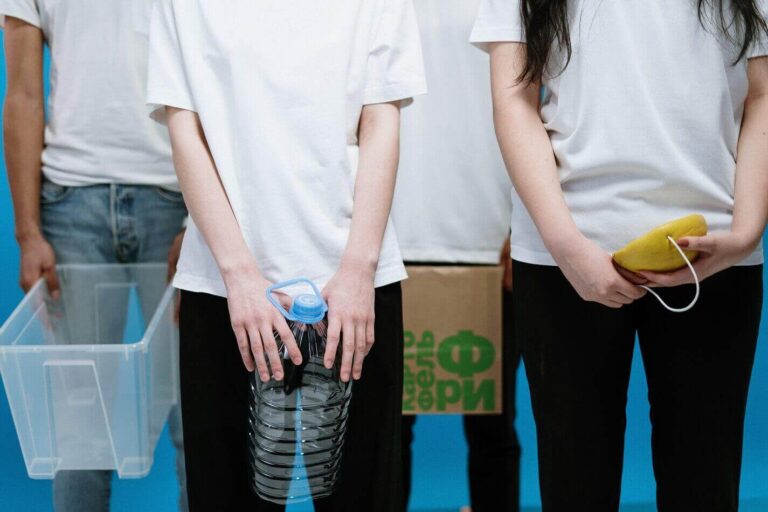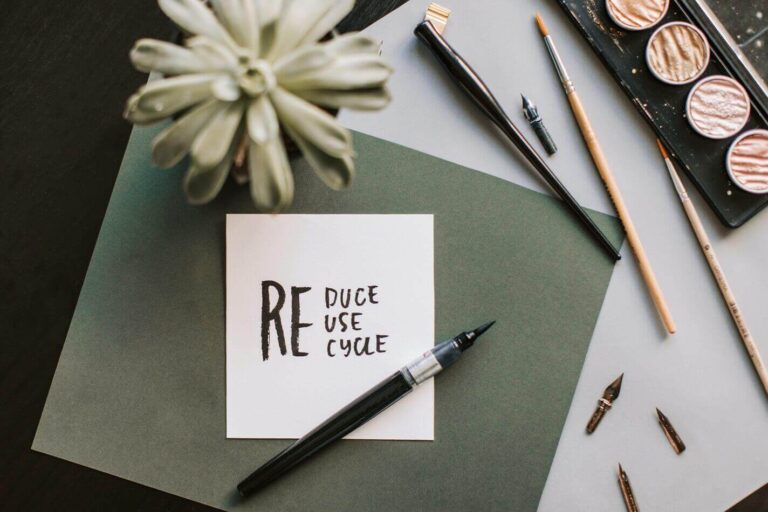How To Get Rid Of Your Waste Responsibly Without Harming The Environment | Sustainable Living
what is sustainable living?
In recent years, we have seen an increasing consciousness about the environmental footprint we leave on this planet, as a response to all the consequences our past and current actions have on the environment surrounding us. It is undeniable the impact we have had on this world, and the necessity to change it soon, and that is where sustainable living comes into play.
What is sustainable living, you may ask? Well, living sustainably consists of the actions we take in our day-to-day lives in order to reduce our environmental impact to a minimum, either by eating a sustainable diet, finding ways to reduce waste, consuming fewer things we don’t need… There are many options for us to choose from when it comes to living a more sustainable and environmentally friendly lifestyle.
In conclusion, a sustainable lifestyle is one that aims to reduce our environmental footprint on this planet, a world that we are sadly destroying with our careless actions every day and one that we cannot ever replace. We highly recommend that you first check out How To Have A Sustainable Diet At Home.
how you can reduce waste at home and live more sustainably
There are many ways to achieve a sustainable lifestyle, one of them is of course reducing our waste, one of the most polluting and material byproducts of our existence. Doing so is no easy task either, but with just a few small changes in our habits, we can achieve a massive change for the better in this world. Having said this, here are the best ways to reduce waste and live more sustainably at home:
- Recycle, one of the best ways of handling the waste we produce is by recycling it. Not only do we make sure our waste is not going to further pollute our rivers, seas, waters, and soil, but we also make sure that we give a second life to the waste, reducing the necessity to create more materials that will end up polluting our planet even more. Check out how easy it is to recycle with the Environmental Protection Agency’s article.
- Compost, this is a great way of handling organic waste, like banana peels, coffee grounds and filters, eggshells… By composting at home you can make sure that your organic waste is not taking up unnecessary space in the landfill, and resources to transport it to the landfill, but also avoid polluting the air with methane that is produced in the landfill. Not only that, but you are also creating a new type of soil enrichment full of nutrients that help new plants grow and thrive, without the need for potentially harmful fertilizers and other man-made nutrients. Overall, composting is something that is really worth doing at home and could have many benefits to it, check this article out to dive deeper into this subject.
- Reuse, an equally important step to reduce waste and the environmental impact we have on this planet, reusing something instead of throwing it out is an excellent option, saving not only the environment but also saving you money that you would have spent on something that you clearly did not need to buy. This is one of the most preferred methods of reducing waste, as people are economically incentivized to do it.
- Anaerobic Digestion, this is a pretty interesting topic in itself and an awesome way to handle our waste, it consists of letting bacteria decompose our waste in a sealed container or generator, producing various byproducts like biogas or digestate that could be used as productive materials in the creation of other useful products.
- Reduce, this is one of the most straightforward of all these ways to reduce waste, simply reduce your consumption of things you do not need and you will produce less waste overall. You don’t have to be a cheapskate, you only have to think before you buy (a great way to do that is using the 7-day rule, wait 7 days before you buy something to see if you really want it or need it, you will be surprised most of the time you stop wanting the item in just a few days), not only will you reduce waste, but you can be a lot more financially free.
Overall, these are the best and simple ways to reduce waste in your own home, we are going to go into more detail about all of them in a second, so you can learn more about them and how you can do them at home.

the three r's in a sustainable waste reduction plan
We have seen the best ways to reduce waste at home, and you may have noticed that many of the ways we have seen start with the letter R, that is no coincidence (or maybe it is), because they are part of the famous three R’s of a sustainable waste reduction, which are a great way of remembering the steps to take to live more sustainably, here is what you need to know:
The three R’s stand for Recycle, Reuse and Reduce, which is what we talked about before. Recycling, reusing, or reducing our consumption alone are great ways to improve our sustainability, but the real magic comes when we combine these all. If you can reduce your consumption, reuse the things you already own instead of throwing them away, and recycle your waste, you can really reduce your environmental footprint to a minimum.
So now you know, you can achieve the most out of products you own by implementing this simple and straightforward three R’s rule, but you may surely already know that, so why don’t we go to the next point?

composting and organic anaerobic digestion
The next step is to reduce the impact of your organic waste because even this type of waste has an environmental impact on our planet. You can do this by composting organic materials, which creates a natural nutrient-rich fertilizer that the plants need to thrive. We already have talked about this so let’s go to a very common question about composting and anaerobic digestion.
What is the difference between composting organic waste and anaerobic digestion? The answer is simple, composting is the process of decomposing organic waste with oxygen present, while anaerobic digestion takes place without any oxygen present, neither air for that matter. The process of decomposing is quite similar, as we have seen before.
How to create a DIY Anaerobic Digestion device at home to naturally decompose your organic waste and produce useful methane and fertilizer that you can use for yourself? Well, they say a picture is worth a thousand words, and a video is composed of thousands of photos, so you may be interested in this video that will show you just that:
summary
We hope you have learned a lot today about how to reduce your waste because so did we. The most important takeaway is that it is not hard to achieve a sustainable lifestyle following these directions, you just have to start doing them, you will never reduce your environmental footprint if you don’t ever start doing something to change it.
We are thrilled to teach people all around the world 🙂 Also, did you really know what Fast Fashion really is and its terrible consequences for the environment, the planet, the workers, society, and the economy? Do you know exactly what the Slow Fashion or Sustainable Fashion movement is? You should really take a look at these articles about this forgotten and unknown but very urgent and important subject, click here to read „Can Fashion Ever Be Sustainable?”, Sustainable Fashion, Ethical Fashion, Slow Fashion or Fast Fashion 101 | How It’s Destroying Our Planet because knowledge is one of the most powerful strengths you can have, while ignorance is your worst weakness.
We also have a big surprise for you! Because we want to give you the right to know us better, we have prepared a carefully dedicated About Us page where we will tell you who we are, what our mission is, what we do, a closer look at our team, and many more things! Do not miss this opportunity and click here to check it out. Also, we invite you to take a look at our Pinterest, where we will pin everyday sustainable fashion-related content, clothing designs, and other things that you will surely love!
Spread the message:
- Click to share on Pinterest (Opens in new window)
- Click to share on Twitter (Opens in new window)
- Click to share on Facebook (Opens in new window)
- Click to share on WhatsApp (Opens in new window)
- Click to share on Reddit (Opens in new window)
- Click to share on Telegram (Opens in new window)
- Click to share on LinkedIn (Opens in new window)
- More
